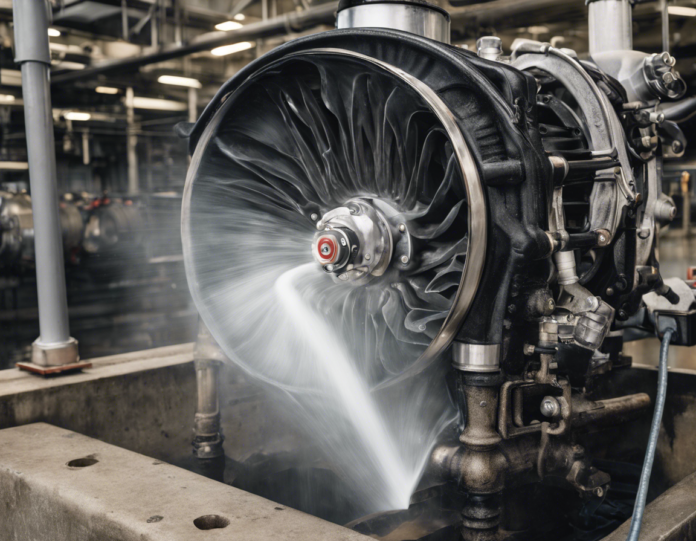Are you tired of manually watering your garden or farm every day, especially during hot summer months? Do you wish there was a more efficient way to ensure your plants receive the right amount of water consistently? If so, a continuous water pumping system might be the solution you’re looking for.
One of the most popular options for this purpose is an engine-powered hose, which can provide a reliable and automated way to water your plants without the need for constant supervision. In this comprehensive guide, we will delve into the benefits of using a continuous water pumping system, explore how an engine-powered hose works, and discuss key factors to consider when choosing and using this equipment effectively.
Benefits of a Continuous Water Pumping System
1. Efficiency: One of the primary advantages of a continuous water pumping system is its efficiency. By automating the watering process, you can ensure that your plants receive a consistent supply of water without the need for manual intervention.
2. Conservation of Resources: With a continuous water pumping system, you can optimize the use of water by delivering the right amount directly to the roots of your plants. This can help conserve water and reduce wastage.
3. Time-Saving: Instead of spending hours each day manually watering your plants, an engine-powered hose can do the job for you, freeing up your time for other important tasks.
4. Improved Plant Health: Consistent watering is essential for the health and vitality of your plants. By using a continuous water pumping system, you can help prevent under or over-watering, leading to healthier and more productive plants.
How Does an Engine-Powered Hose Work?
An engine-powered hose is a type of continuous water pumping system that typically consists of a water pump powered by a gasoline or diesel engine. The water pump draws water from a water source, such as a tank or a well, and pushes it through a hose to deliver it to your plants.
The engine-powered hose is designed to be portable and easy to maneuver, allowing you to move it around your garden or farm as needed. Some models may come with additional features, such as adjustable pressure settings or spray nozzles, to customize the watering process according to your specific requirements.
To use an engine-powered hose, you simply need to start the engine, position the hose where you want the water to flow, and adjust the settings to control the water flow rate and direction. This setup provides a convenient and efficient way to water large areas quickly and effectively.
Key Factors to Consider
1. Water Source: Before investing in an engine-powered hose, consider the availability of a suitable water source, such as a nearby water tank or well, to ensure a consistent water supply for your system.
2. Power Source: Choose an engine-powered hose that is compatible with your preferred power source, whether it’s gasoline, diesel, or another option. Make sure to factor in fuel efficiency and ease of maintenance when selecting a model.
3. Hose Length and Diameter: The length and diameter of the hose will determine the reach and water flow capacity of the system. Consider the size of your garden or farm to choose a hose that can effectively cover the area you need to water.
4. Adjustability and Control: Opt for an engine-powered hose that offers adjustable settings for water pressure and spray patterns. This will give you more control over the watering process and allow you to tailor it to the specific needs of your plants.
5. Durability and Maintenance: Look for a high-quality, durable hose that can withstand frequent use and exposure to the elements. Regular maintenance, such as cleaning the filters and checking for any leaks, is essential to ensure the longevity and efficiency of your system.
Frequently Asked Questions (FAQs)
1. Can I use an engine-powered hose for both watering and irrigation purposes?
Yes, an engine-powered hose can be versatile enough to handle both watering tasks for plants as well as irrigation needs for larger agricultural areas.
2. Is it necessary to have technical expertise to operate an engine-powered hose?
While some basic knowledge of engine mechanics may be helpful, most engine-powered hoses are designed to be user-friendly and easy to operate with straightforward instructions.
3. What are some safety precautions to keep in mind when using an engine-powered hose?
Always follow the manufacturer’s guidelines for safe operation, including wearing appropriate protective gear, keeping flammable materials away from the engine, and shutting off the engine when refueling.
4. Can an engine-powered hose be used in areas without access to electricity?
Yes, that’s one of the main advantages of an engine-powered hose – it doesn’t rely on electricity and can be used in remote locations or areas without power infrastructure.
5. How can I extend the lifespan of my engine-powered hose?
Regular maintenance, such as cleaning the engine air filter, checking for leaks, and storing the hose properly when not in use, can help prolong its lifespan and ensure optimal performance.
In conclusion, a continuous water pumping system like an engine-powered hose can be a game-changer for those looking to streamline their watering process and enhance the health of their plants. By understanding how these systems work and considering key factors when choosing and using them, you can enjoy the benefits of efficient, automated watering for your garden or farm.









